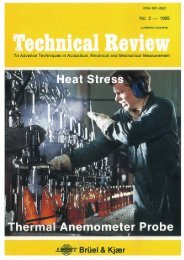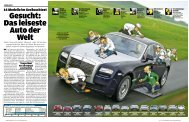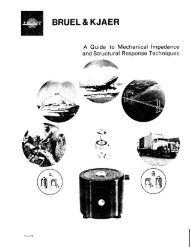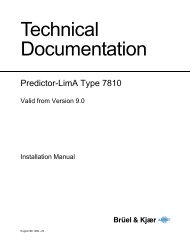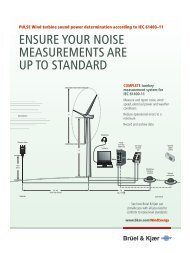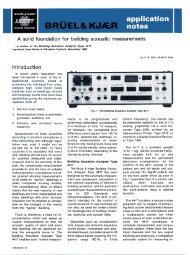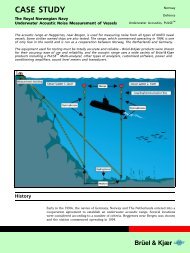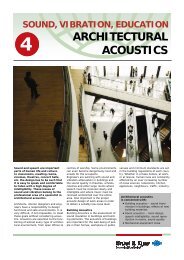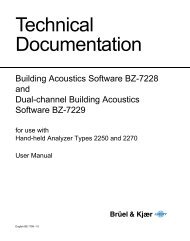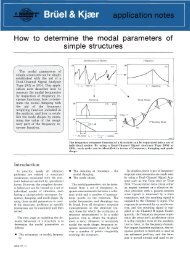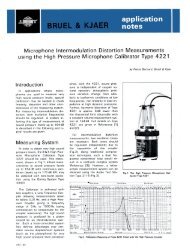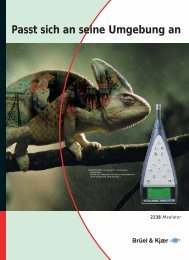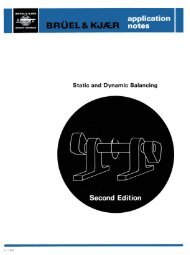Thyristors in Railway Traction How can their effects be measured?
Thyristors in Railway Traction How can their effects be measured?
Thyristors in Railway Traction How can their effects be measured?
You also want an ePaper? Increase the reach of your titles
YUMPU automatically turns print PDFs into web optimized ePapers that Google loves.
The next possibility to consider<br />
would <strong>be</strong> the use of a swept-frequency<br />
analyzer. This consists of a<br />
narrow-band filter (with a 3 dB<br />
bandwidth B Hz, say), sweep<strong>in</strong>g at a<br />
rate of S Hz per second through the<br />
frequency range from 0 Hz to<br />
n max f Hz (where nmax is the order<br />
of the highest harmonic analyzed<br />
and f is the fundamental frequency).<br />
The output of the filter is<br />
detected by a rectifier, and the DC<br />
from this rectifier is smoothed by an<br />
RC filter. The output from the RC filter<br />
is logarithmically converted and<br />
fed to a graphic level recorder or cathode<br />
ray tu<strong>be</strong> hav<strong>in</strong>g a horizontal<br />
sweep facility synchronized with the<br />
sweep of the filter.<br />
The filter bandwidth B should <strong>be</strong><br />
narrow enough to resolve adjacent<br />
harmonics differ<strong>in</strong>g <strong>in</strong> amplitude by<br />
more than 10dB. This means that<br />
B should <strong>be</strong> about one-third of the<br />
<strong>in</strong>terval <strong>be</strong>tween peaks. If it is required<br />
to resolve only odd harmonics<br />
(which is all an ideal assymmetric<br />
half-controlled bridge rectifier<br />
generates <strong>in</strong> the supply),<br />
2f<br />
B = Hz<br />
3<br />
To resolve even harmonics at a low<br />
level, such as 30dB lower than adjacent<br />
odd harmonics, the bandwidth<br />
would have to <strong>be</strong> more than<br />
proportionately narrower and the<br />
sweep rate much slower.<br />
When a harmonic enters the passband<br />
of a narrow-band filter, the<br />
output of the filter does not <strong>in</strong>stantaneously<br />
build up — it takes a f<strong>in</strong>ite<br />
time tR of the order of 1/B seconds.<br />
Analysis shows that for a typi-<br />
■ - ,-.. In these two plots, both rectifier bridges on the thyristor locomotive have <strong>be</strong>gun to conduct.<br />
y ' Note that the Type 2031 provides a logarithmic (dB) amplitude scale, but a l<strong>in</strong>ear frequency<br />
scale. The advantage of the former is the wide range of measurement possible - the 35th har-<br />
_ ^ ' monic, for example, is 60 dB <strong>be</strong>low the 500-Amp reference level <strong>in</strong> the lower figure, i.e., 0,5<br />
R apprux. X Amp, which would <strong>be</strong> <strong>in</strong>signifi<strong>can</strong>t on a l<strong>in</strong>ear scale. The advantage of a l<strong>in</strong>ear frequency scale<br />
is that it gives uniform spac<strong>in</strong>g of harmonics; <strong>in</strong> these figures the frequency range is 0 to<br />
2000 Hz<br />
= — x —<br />
3 2f<br />
2<br />
=—sec<br />
f<br />
In order to permit the RC filter to<br />
build up to maximum level, each<br />
harmonic must rema<strong>in</strong> with<strong>in</strong> the<br />
passband B a further length of time<br />
depend<strong>in</strong>g on the time-constant RC.<br />
10



